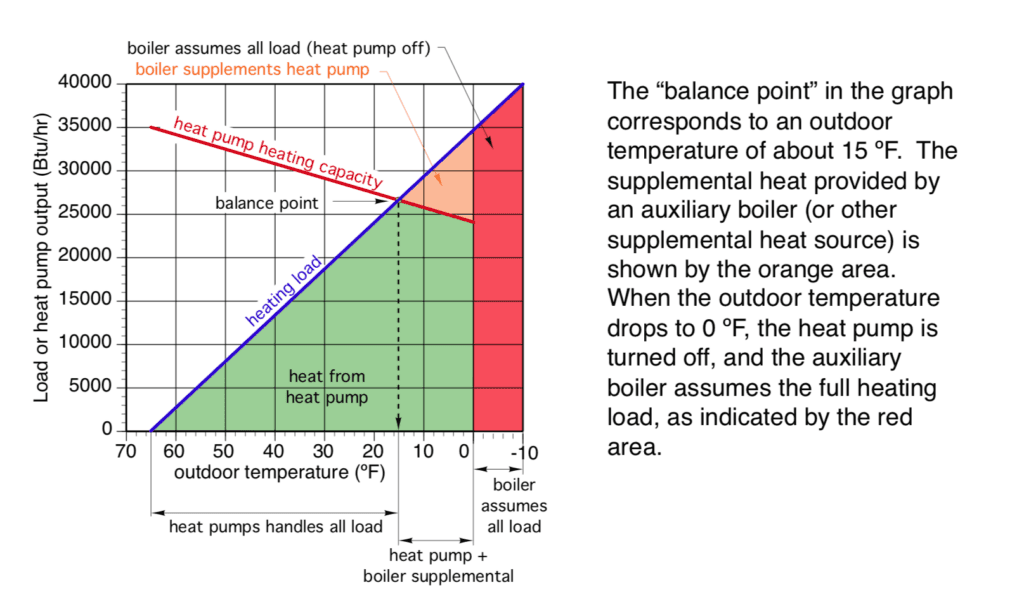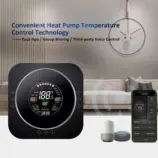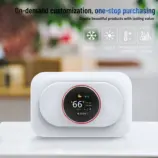Introduction
In today's modern world, technology permeates every aspect of our lives, bringing with it radical changes—home heating and cooling systems proving no exception. Rising from this trend are smart heat pump thermostats, innovative devices that elegantly blend energy efficiency with optimum indoor comfort.
Designed to adapt to your lifestyle and weather conditions, these intelligent systems have transformed how we regulate home temperatures—say goodbye to imprecise manual controls and welcome the dawn of smart temperature management.
Heat Pump Thermostats Basic Knowledge
A smart heat pump thermostat is a digital device connected to your home's heating system. Unlike traditional thermostats, it incorporates advanced AI technologies such as machine learning to understand and predict your behavior patterns, providing optimum comfort at all times and reducing energy consumption.
A heat pump, which the smart thermostat controls, is a device capable of both heating and cooling your home. Based on principles of thermal dynamics, it draws heat out of your house in hot weather and brings in heat from outdoors during cold seasons. Regardless of the weather outside, a heat pump can ensure year-round comfort within your home.
Yet, heat pumps, given their complex and precise operations, need thermostats for control. That's where smart heat pump thermostats come in.
Utilizing intricate algorithms, these thermostats can fine-tune the heat pump's output based on your daily routines. For instance, if it learns you arrive home at 5 PM daily, it starts adjusting the house's temperature in advance, ensuring optimal comfort as soon as you walk in. This way, you avoid unnecessary energy wastage while enjoying a seamlessly comfortable environment.

Heat pump balance point. Image courtesy of John Siegenthaler/APPROPRIATE DESIGNS. Specialists in the use of hydronic comfort heating. All rights reserved.
These smart thermostats also support remote control. Once connected to WiFi, they can be controlled via smart devices like phones, tablets, or computers. This means you can adjust your home's temperature before you arrive home or accommodate sudden changes in your schedule, even while you are away.
Moreover, some advanced smart thermostats have smart home integration features allowing compatibility with systems such as Amazon Alexa, Google Home, and Apple HomeKit. This integration gives you better control and understanding of your home's automation.
In a world grappling with sustainability and energy consumption, smart heat pump thermostats offer a highly efficient, convenient solution that caters to the modern home's heating needs.
Features
1. Learning Capability:
One of the distinguishing features of smart heat pump thermostats is their ability to learn. Over time, these devices learn your schedule and preferences for temperature, adjusting the home's heat to provide comfort when you're there and to save energy when you're not. This is done through complex algorithms that track and adapt to your behavior over time.
2. Geofencing:
This feature helps your thermostat detect when you leave or return home using your smartphone's location, adjusting the temperature accordingly. This ensures you walk into a comfortably heated/cooled home and helps save on unnecessary energy expenditures when no one is home.
3. Remote Control:
Through an associated app on your smartphone or tablet, you can control your smart thermostat from anywhere. This means you can always ensure your home is at the ideal temperature, or adjust it if a change in plans means you'll be arriving earlier or later than usual.
4. Integration with Home Ecosystem:
Many smart heat pump thermostats like Grus's EcoNet-HP can seamlessly integrate with other smart home devices and systems like Amazon Alexa, Google Home, and Apple HomeKit. This allows for easy voice control and more comprehensive control over your home's automation.
Benefits
1. Increased Energy Efficiency:
With its advanced features such as learning, geofencing, and remote control, a smart thermostat helps reduce energy consumption—some estimates suggest savings of up to 10% to 23% on heating costs. Through efficient scheduling and heating adjustments, the thermostat manages your heat pump in a way that conserves energy without compromising comfort.
2. Improved Comfort:
A traditional thermostat requires manual adjustments, and it's often a work of approximations. In contrast, a smart heat pump thermostat adjusts on its own using your preferences learned over time. This means more precise temperature control for a comfortable indoor environment.
3. Device Analytics:
Many smart thermostats come with reporting tools that provide a detailed overview of your energy consumption. By understanding when and where energy usage is highest, you can take informed steps to cut down on unnecessary usage.
4. Maintenance Notifications:
Some smart thermostats have the added feature of alerting you when your heat pump system needs maintenance. This heads-up can prevent minor issues from becoming significant, costly problems in the future.
Buyer's Guide
1. Compatibility:
Before choosing a smart heat pump thermostat, it's essential to confirm whether it's compatible with your existing heating system. Check the user manual or manufacturer's website or consult with a HVAC professional if unsure.
2. Learning and Geofencing Capability:
As previously mentioned, these features provide automatic adjustments for energy efficiency and comfort. Check if the thermostats you're considering offer these functionalities.
3. Remote Control
Having remote control access is a key feature of smart thermostats. Make sure the thermostat of choice is equipped with this feature and that its companion app is compatible with your mobile device.
4. Smart Home Integration
If you have other smart home devices or systems at home, it might be beneficial if the thermostat can integrate with them. This provides a more seamless and centralized user experience.
5. Device Analytics
Opt for a smart thermostat that provides energy use reports. This data can influence your heating and cooling habits for the better.
6. User Experience
The best smart thermostat for you is one that provides an interface that is easy to navigate, has a responsive customer service team, and gets good reviews for its user experience.
7. Budget
Just like any investment, consider your budget. While some smart thermostats are higher-end with a lot of features, others offer the main advantages at a lower cost. It's up to you to decide whether the additional features justify the price difference.
Installation and Operation
Once you've purchased your smart heat pump thermostat, installation might be your next worry. Thankfully, many smart thermostats come with easy-to-follow guides and may only require a common set of tools—and for some models, professional installation is not typically necessary. However, for those less familiar with DIY projects or if your home system is complex, hiring a contractor might be a good idea to ensure correct setup and operation.
Operating a smart thermostat is usually straightforward thanks to user-friendly interfaces. Once installed, the thermostat begins collecting data about your daily routines and preferences, learning to adjust temperatures more efficiently and comfortably. This process might take a week or more, so don't expect perfection from day one. Further refinement comes with time and regular use.
Conclusion
The age of intelligent temperature control is upon us. The smart heat pump thermostat represents a significant leap from conventional manual thermostats, offering increased control over your home's environment while substantially reducing energy consumption. The investment in a smart thermostat is not just a monetary one—it’s a commitment to a more sustainable, energy-efficient future while enjoying the comfort and convenience of automated home heating and cooling.



